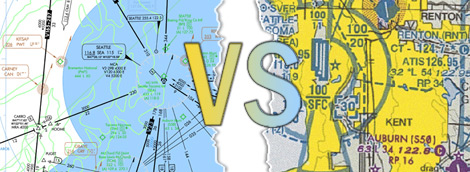
Here’s a conversation starter for any group of instrument pilots: Do you file IFR on every flight, or only when necessary?
![]() Many pilots have strong opinions on that question, and plenty of justifications for them. There’s no absolute right or wrong answer, and a pilot’s personal practice may have evolved with time.
Many pilots have strong opinions on that question, and plenty of justifications for them. There’s no absolute right or wrong answer, and a pilot’s personal practice may have evolved with time.
Pilots who “file” routinely invoke the benefits of that extra pair of eyes at the radar scope, and the proficiency maintained by having to plan and fly IFR routes. The reassurance of knowing that you are pre-cleared through difficult airspace gets a lot of votes, as does the automatic activating and closing of flight plans (unless you are landing at a nontowered airport and must see to that chore yourself). Flying on a clearance eliminates the possibility of pushing a VFR flight into marginal weather or worse—a strong safety argument.
On the other hand, cumbersome, time-consuming routings are a disincentive to filing IFR, say those who only exercise instrument privileges when necessary. Convenience of using altitudes below the minimum en route altitude is another, especially for pilots of airplanes capable of only a modest rate of climb. Icing forecasts at IFR altitudes may require flying lower under VFR. Facilities at the destination are a consideration; there are still plenty of remote airports where closing a flight plan on the ground by cell phone, or at low altitude by radio is not a sure thing. On departure from such a place, potential aggravations and hazards of beating a void time deserve consideration.
What about emergencies? When his engine quit, a Mooney pilot turned to ATC for vectors to the nearest airport. “This was the reason that I fly at altitudes in the low teens and file IFR even when the weather is mostly VFR. The reality was sinking in; I had one engine and it was not running,” he wrote in this installment of Never Again Online.
For you middle-of-the-roaders out there, the FAA offers a compromise between the two positions. “To maintain IFR proficiency, pilots are urged to practice IFR procedures whenever possible, even when operating VFR,” says the Aeronautical Information Manual (in Chapter 5-1-2). Note the passage’s seven points for promoting proficiency.
Whether you prefer to file IFR for en route flying, or hold the option in reserve, make an objective decision for each flight.



